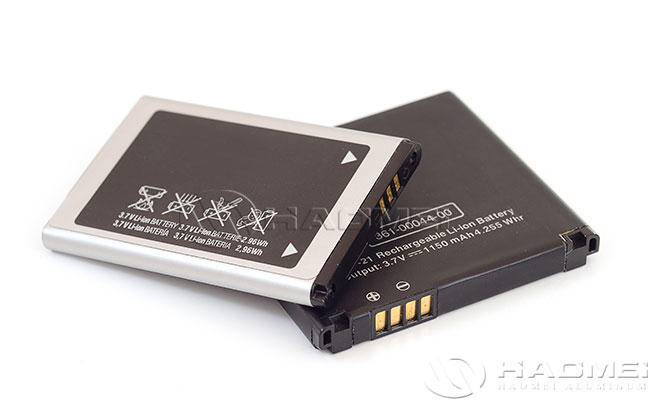Categories
- News From Haomei (315)
Aluminum cathode foil for battery is a material that has good conductivity, soft texture for easy processing, and is inexpensive. Aluminum foil can also form a layer of oxide protection film on its surface, it is suitable for use as the electrode sheet for secondary batteries. In lithium batteries, the positive electrode potential is high, and copper foil is easily oxidized at high potentials. Moreover, the oxide layer on copper foil is loose. On the other hand, aluminum foil has a high oxidation potential, and the surface of aluminum foil has a dense oxide film, which provides better protection for the internal aluminum. Therefore, aluminum foil is used for the positive electrode sheet in lithium batteries.

Aluminum cathode foil for battery with a thickness of 10-20μm is often used for the cathode of lithium ion batteries. A comparison was made between chemically corroded rough surface aluminum foil and smooth surface aluminum foil to investigate the impact of the surface morphology of aluminum foil on the performance of lithium batteries. For lithium battery materials like LiCoO2, which have high conductivity and larger particles, there is no significant difference in the lithium battery performance between the two types of battery aluminum foil. However, for materials like LiFePO4, which have lower conductivity and smaller particles, there is a significant difference in high-rate discharge performance. By optimizing the surface morphology of aluminum foil and the particle size of battery materials, the performance of the battery can be improved.
The product specification of aluminum cathode foil for battery are:
Alloy grades: 1070, 1235A, 8021
Status: H18, H22
Thickness: 0.01-0.025mm
Tensile strength: 40-150Mpa
Elongation: ≥1.0
Core tube inner diameter: 30-76.2mm (adjustable)
Width: 20-150mm (adjustable)
Aluminum content: ≥99.8
Product use: Used as the positive electrode current collector for lithium-ion batteries.
Packaging and transportation: Wrapped in foam fabric as the first layer, sealed in polyethylene bags as the second layer, then packed into cartons.